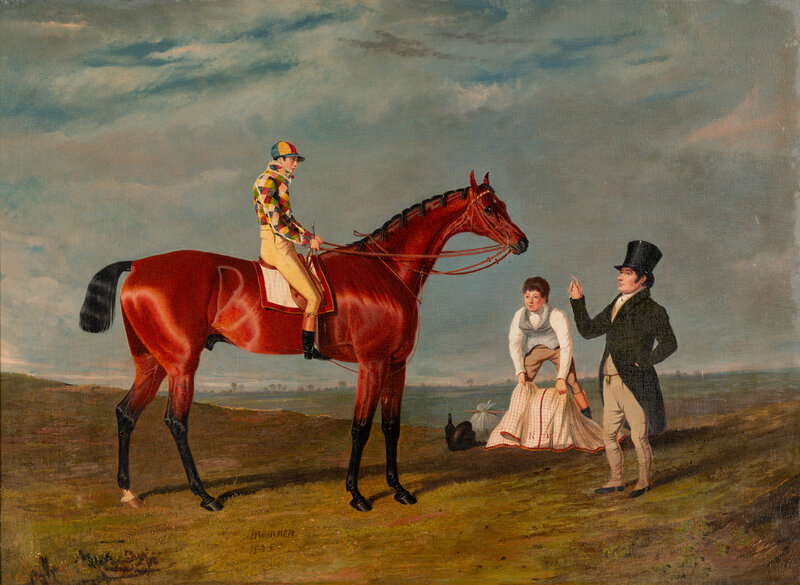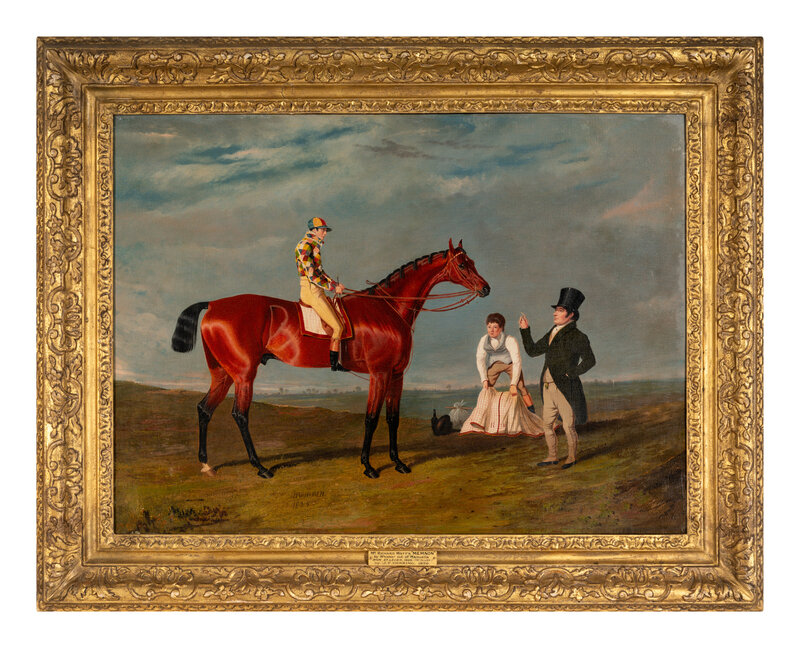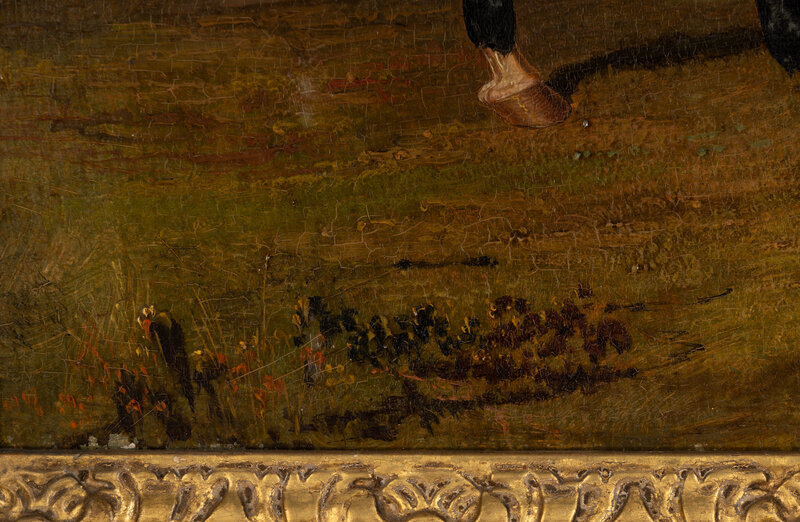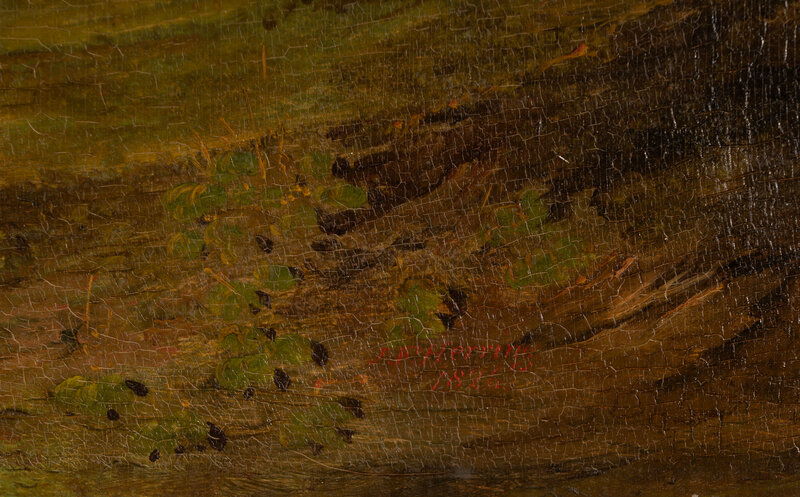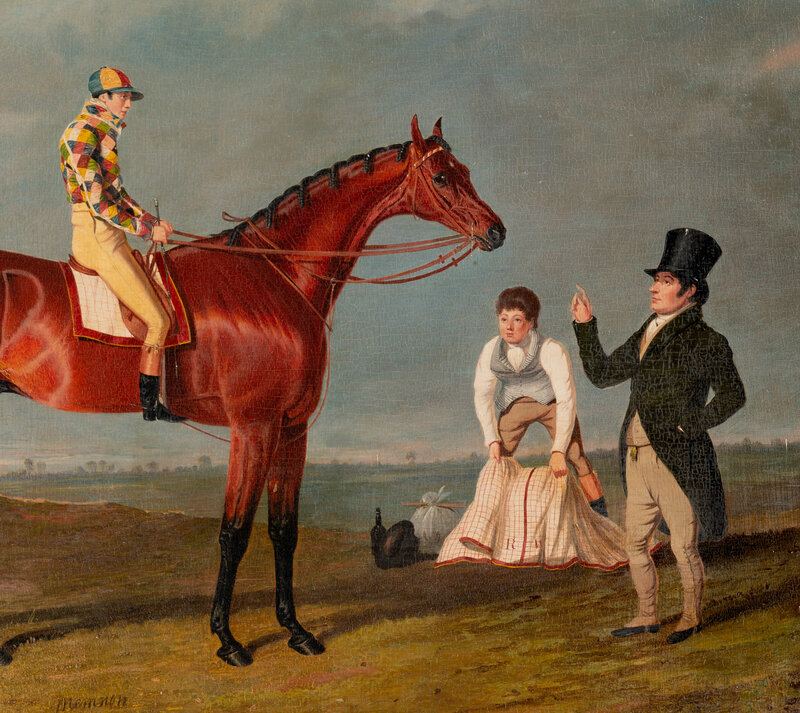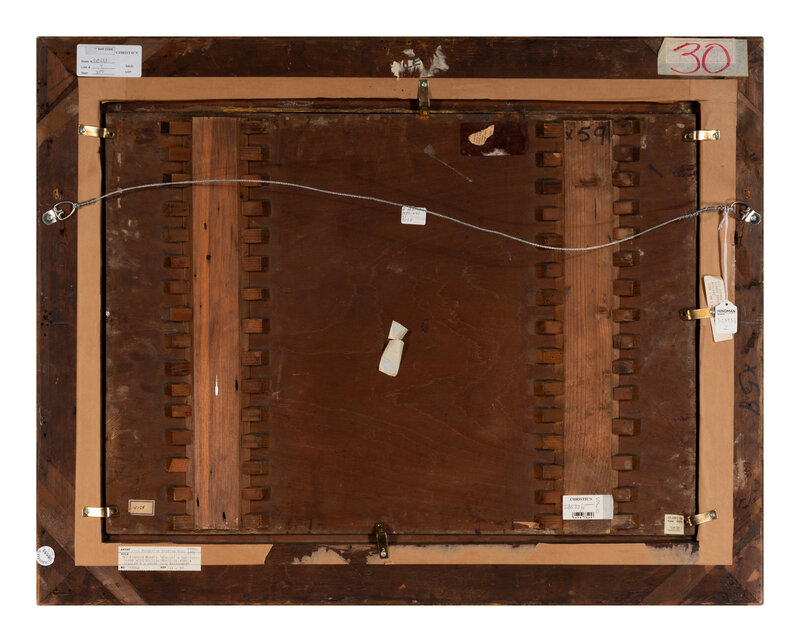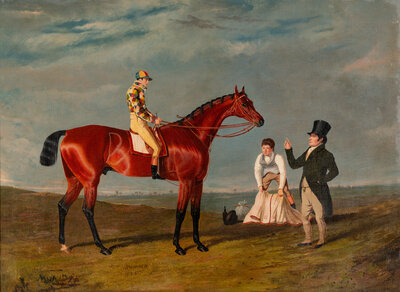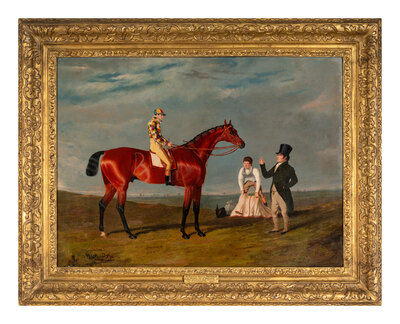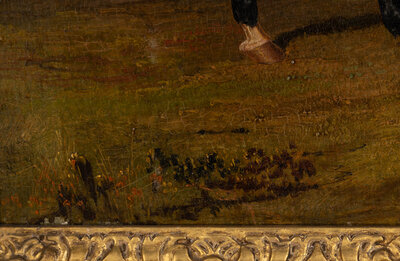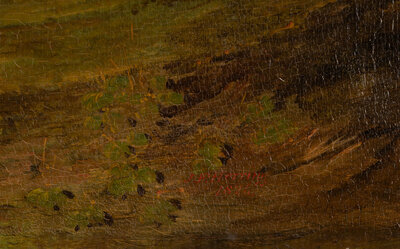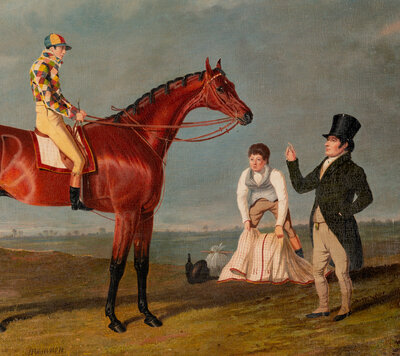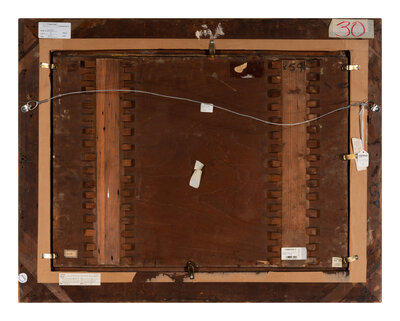Lot 18
John Frederick Herring the Elder
(British, 1795-1865)
Memnon, a Bright Bay, William Scott up, Wearing the Harlequin Colors of Lord Darlington, 1826
Sale 1297 - European Art
May 16, 2024
10:00AM CT
Live / Chicago
Own a similar item?
Estimate
$70,000 -
100,000
Price Realized
$63,500
Sold prices are inclusive of Buyer’s Premium
Lot Description
John Frederick Herring the Elder
(British, 1795-1865)
Memnon, a Bright Bay, William Scott up, Wearing the Harlequin Colors of Lord Darlington, 1826
oil on panel
signed J.F. Herring and dated (lower right); inscribed Memnon/1825 (lower center)
21 3/4 x 30 inches.
Property from the Estate of Arthur I. Appleton
Provenance:
Frost & Reed, Ltd., London, no. 55994S
Lot note:
espite being essentially self-taught, John Frederick Herring the Elder's paintings are some of the most accurate depictions of racing history in the first half of the nineteenth century. The artist had sketched animals since childhood, and at the age of eighteen, while working as a coachman, he was able to study the horses, as well as the other breeds he encountered in his travels through the English countryside. By the age of 25 he was exhibiting at the Royal Academy, where his talent was eventually recognized by wealthy patrons who commissioned him to paint their hunters and racehorses, including Queen Victoria. Both Memnon, a Bright Bay, William Scott up, Wearing the Harlequin Colors of Lord Darlington, 1826, and Lottery Going to the Start, 1830, are two of the finest portrayals of the Doncaster racecourse, a subject Herring revisited in numerous variations.
Memnon, a Bright Bay, William Scott up, Wearing the Harlequin Colors of Lord Darlington, shows the jockey William Scott mounted on Memnon, a bay colt, and the winner of the classic St. Leger stakes in 1825 at Doncaster. The horse was bred and owned by Richard Watt of Burton Constable in East Yorkshire. The 1825 St. Leger race brought out a record field of thirty horses, and due to popular interest, the race’s result was the first ever to be carried by pigeon. While a bird took the message to London, specially trained dogs conveyed it to Manchester. In 1825 Memnon was sold to Lord Darlington for £3,500, for whom he beat Lord Exeter's Enamel in a match for 1,000 guineas at Newmarket, and also won the Ascot Gold Cup with Sam Chifney up, before being retired to stud. The rider in the painting, William ‘Bill’ Scott, was one of the foremost jockeys of his generation. He won the St. Leger nine times, which included a run of four wins from 1838 to 1841. He also won the Derby four times, and the Oaks on three occasions.
Lottery Going to the Start, like Memnon, masterfully shows the Doncaster racecourse and the horses that ran it. The Doncaster Cup was founded in 1766 and is the oldest continuous horse race in Britain. Herring was to depict the 1825 Doncaster Cup participants in variants of the present scene several times over the years, due to its popularity. In the left foreground of the composition is the 1825 Cup’s eventual winner, Lottery, preparing to start with G. Nelson up. Standing fully sixteen hands high, the racehorse’s notable physical prowess is brilliantly conveyed by the artist. The tense, sleek, musculature suggests his famous speed, and the wide eyed and proud stance remind the viewer of his strong spirit. In the 1825 race, Lottery's closest match was Mr. Craven's Longwaist (shown at the left of the three horses standing in mid-ground), bested by half a neck. Left over half a mile behind, the rest of the field included Mr. Lumley's second place finisher Falcon, Mr. Farquharson's third place Figaro (the right most of the three horses), with also-rans comprising Lord Silgo's Starch, Mr. Lambton's Cedric (the middle horse of the three), the Duke of Leeds' Crowcatcher, Lord Exeter's Zealot, and Mr. Duncome's bay filly St. Helena. Though many consider the 1825 Cup Lottery's finest achievement, that same year he won the Fitzwilliam Stakes at York and would go on to win a second Gold Cup through a victory at Preston. Lottery would end his life in France, one of many English thoroughbreds imported in the 1830s by Henri Lacase, a buyer for the French National stud of the Orleans monarchy.
Condition Report
Contact Information
Auction Specialist
